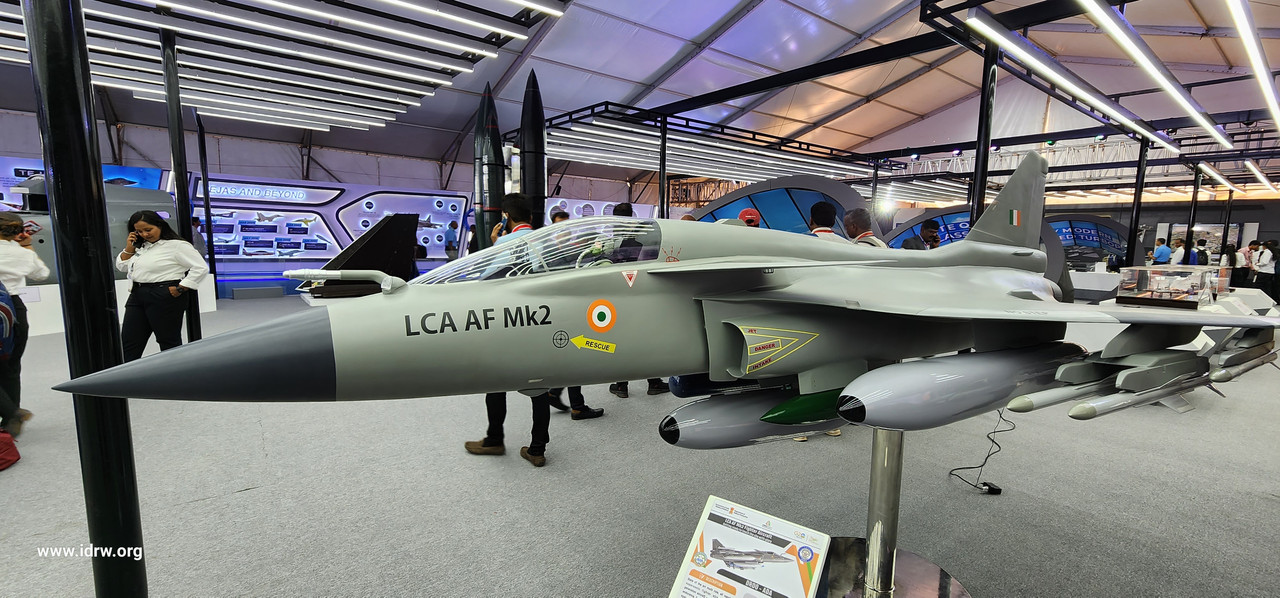SOURCE: AFI


In a move that has sent ripples through the global defense industry, the United States has signaled its intent to officially veto the sale of the General Electric F414-GE-39E engine, a critical component of the Saab Gripen E fighter jet, to the Fuerza Aeroespacial Colombiana (FAC), Colombia’s air force. This decision, aimed at nudging Colombia toward purchasing American-made Lockheed Martin F-16 jets instead, has sparked debate about its broader implications—particularly for India’s Tejas MkII, which relies on a variant of the same engine. With the U.S. wielding significant influence over the export of its technology, questions are mounting about whether this veto could cast a shadow over India’s ambitions to market the Tejas MkII internationally, especially to nations aligned with or contested by American interests.
The F414-GE-39E, a derivative of the widely used F414 family, powers the advanced Gripen E, a lightweight, multi-role fighter developed by Sweden’s Saab. Colombia had been considering the Gripen E as part of its effort to modernize its aging fleet, but the U.S. veto effectively scuttles that option by denying access to the engine, a move seen as leveraging American control over key aerospace components to secure a strategic sale.
The F414 engine’s versatility and performance have made it a cornerstone of multiple fighter programs worldwide, including India’s Tejas MkII, an upgraded version of the indigenous Light Combat Aircraft (LCA) being developed by Hindustan Aeronautics Limited (HAL). The Indian variant, the F414-INS6, is slated to power both the Tejas MkII and initial batches of the Advanced Medium Combat Aircraft (AMCA), with production set to occur in India under an 80 percent technology transfer agreement with General Electric (GE).
The U.S. decision to block the engine’s sale to Colombia has raised eyebrows in New Delhi, where defense planners are eyeing export markets for the Tejas MkII as a means to bolster India’s defense industry and geopolitical influence. The fighter, designed as a cost-effective, single-engine platform with modern avionics and multi-role capabilities, has been pitched as a competitive alternative to offerings like the Gripen, F-16, and France’s Rafale. Countries in Southeast Asia, Africa, and Latin America—many of which maintain cordial ties with the U.S.—are seen as potential buyers. However, the Colombia precedent suggests that the U.S. could use its authority over the F414 engine to restrict India’s export prospects, particularly in markets where American firms like Lockheed Martin or Boeing are vying for contracts.
India’s agreement with GE, finalized in 2023 following years of negotiations, allows HAL to co-produce the F414-INS6 with significant local input, a deal hailed as a milestone in U.S.-India defense cooperation. Yet, the arrangement remains subject to U.S. export controls under the International Traffic in Arms Regulations (ITAR), meaning Washington retains the final say on where the engines—and by extension, the Tejas MkII—can be sold. The veto on Colombia illustrates this leverage in action: by denying the F414-GE-39E to Saab, the U.S. has effectively sidelined a European competitor in favor of its own F-16. This raises a critical question: could the U.S. impose similar restrictions on India if the Tejas MkII begins to challenge American fighters in the export arena?
For India, the stakes are high. The Tejas MkII, expected to enter service in the late 2020s, represents a leap forward from the MkI, offering greater payload, range, and combat capability—attributes that could appeal to nations seeking affordable yet advanced fighters. HAL has already secured domestic orders for over 100 units, and with production capacity expanding, exports are a natural next step. However, the U.S. veto power over the F414 engine introduces a layer of uncertainty. Nations friendly with Washington, or those already operating U.S.-made aircraft, might face pressure to avoid the Tejas MkII if it risks straining bilateral ties or triggering an engine embargo. Similarly, in head-to-head competitions with American jets, the U.S. could wield its ITAR authority to tilt the scales.
This isn’t a hypothetical concern. Posts on X have highlighted sentiment around the Colombia veto, with some users noting its potential to disrupt not just the Gripen E but also other F414-powered platforms like the Tejas MkII. While the U.S. has approved the engine’s co-production in India—a sign of deepening trust—its willingness to greenlight exports to third countries remains untested. Historical precedent suggests caution: the U.S. has occasionally blocked technology transfers to protect its strategic and commercial interests, as seen in past restrictions on allies like Turkey over Russian arms purchases.
NOTE: AFI is a proud outsourced content creator partner of IDRW.ORG. All content created by AFI is the sole property of AFI and is protected by copyright. AFI takes copyright infringement seriously and will pursue all legal options available to protect its content.